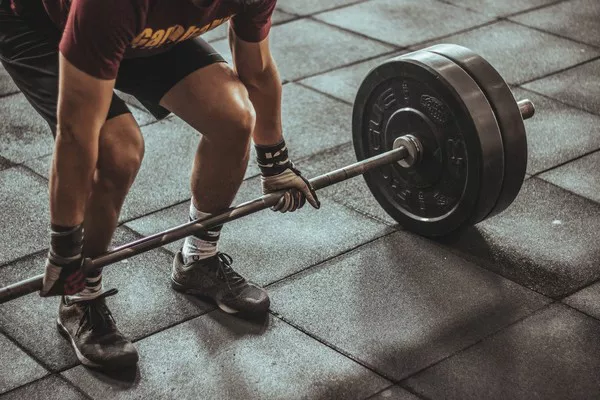In the realm of fitness, the debate between lifting weights and cardiovascular exercise (cardio) has long been a topic of discussion. While both forms of exercise offer unique benefits, some individuals may choose to focus exclusively on weightlifting, foregoing cardio altogether. In this article, we delve into the potential effects of lifting weights without incorporating cardio, examining its impact on various aspects of physical health, fitness, and overall well-being.
Understanding the Role of Weightlifting and Cardio
Before exploring the consequences of exclusively lifting weights without cardio, it’s essential to understand the distinct benefits that each form of exercise offers:
Weightlifting
Muscle Strength and Hypertrophy: Weightlifting primarily targets muscle strength and hypertrophy (muscle growth) by subjecting muscles to resistance.
Bone Health: Weightlifting can help improve bone density and reduce the risk of osteoporosis.
Metabolic Rate: Building lean muscle mass through weightlifting can increase metabolism, leading to greater calorie expenditure at rest.
Cardiovascular Exercise
Cardiovascular Health: Cardio exercises, such as running, cycling, and swimming, improve cardiovascular health by strengthening the heart and increasing circulation.
Endurance: Cardiovascular exercise enhances endurance and stamina, allowing individuals to sustain physical activity for longer durations.
Caloric Expenditure: Cardio activities are effective for burning calories and promoting weight loss or weight maintenance.
The Effects of Exclusively Lifting Weights Without Cardio
While weightlifting offers numerous benefits for muscle strength and body composition, exclusively focusing on lifting weights without incorporating cardio may lead to certain limitations and potential drawbacks:
Limited Cardiovascular Health
Reduced Cardiovascular Fitness: Without engaging in cardio exercise, individuals may experience diminished cardiovascular fitness, including decreased heart health and endurance.
Risk of Cardiovascular Disease: Neglecting cardio may increase the risk of developing cardiovascular diseases such as heart disease, hypertension, and stroke.
Less Caloric Expenditure
Limited Caloric Burn: Weightlifting primarily targets muscle development and may not provide the same level of caloric expenditure as cardio exercises, potentially hindering weight loss or weight management goals.
Dependence on Diet: Individuals who exclusively lift weights may need to rely more heavily on dietary adjustments to achieve and maintain a calorie deficit for weight loss.
Imbalanced Fitness Profile
Limited Functional Fitness: While weightlifting improves muscle strength and hypertrophy, it may not address other aspects of fitness, such as flexibility, agility, and coordination, which are commonly targeted through cardio activities.
Increased Injury Risk: Exclusively focusing on weightlifting without addressing overall fitness may lead to muscle imbalances, reduced joint mobility, and an increased risk of injury.
Psychological Impact
Potential Boredom or Burnout: For some individuals, exclusively lifting weights without variety in their exercise routine may lead to boredom or burnout, diminishing motivation and adherence to their fitness regimen.
Missing Out on Mental Health Benefits: Cardiovascular exercise is known to release endorphins, which can improve mood, reduce stress, and alleviate symptoms of anxiety and depression. Neglecting cardio may result in missing out on these mental health benefits.
Finding Balance: Incorporating Both Weightlifting and Cardio
While exclusively lifting weights without cardio may have limitations, finding a balance between the two forms of exercise can offer a more comprehensive approach to fitness and overall health. Here are some strategies for incorporating both weightlifting and cardio into your workout routine:
Hybrid Workouts
Combine Strength and Cardio: Incorporate elements of both weightlifting and cardio into your workouts by alternating between resistance training exercises and cardiovascular activities.
Circuit Training: Perform circuit-style workouts that integrate strength exercises with short bursts of cardio, such as jumping jacks or high knees, to elevate heart rate and promote calorie burn.
Periodization
Alternate Training Phases: Implement periodization principles by alternating between phases focused on strength training and phases emphasizing cardiovascular conditioning. This approach allows for targeted progress in both areas while preventing plateaus and overtraining.
Cross-Training
Explore Different Activities: Experiment with a variety of cardio activities, including running, cycling, swimming, hiking, and group fitness classes, to keep workouts engaging and challenging.
Incorporate Functional Training: Include functional training exercises that mimic real-life movements and improve overall fitness, such as kettlebell swings, battle ropes, and agility drills.
Recovery and Rest
Prioritize Recovery: Allow adequate time for rest and recovery between workouts to prevent overtraining and reduce the risk of injury.
Include Active Recovery: Incorporate low-intensity activities such as walking, yoga, or foam rolling into your routine to promote circulation, flexibility, and muscular recovery.
Conclusion: Striking a Balance for Optimal Fitness
In the ongoing debate between weightlifting and cardio, the key takeaway is the importance of balance and moderation in achieving optimal fitness and overall health. While weightlifting offers significant benefits for muscle strength and body composition, neglecting cardio can lead to limitations in cardiovascular health, caloric expenditure, and overall fitness. By incorporating a variety of exercises, including both weightlifting and cardio, individuals can enjoy a well-rounded fitness regimen that addresses multiple aspects of physical health and well-being. Ultimately, finding the right balance between weightlifting and cardio is essential for achieving long-term success and maintaining a healthy, active lifestyle.
[inline_related_posts title=”You Might Be Interested In” title_align=”left” style=”list” number=”6″ align=”none” ids=”7658,7604,7601″ by=”categories” orderby=”rand” order=”DESC” hide_thumb=”no” thumb_right=”no” views=”no” date=”yes” grid_columns=”2″ post_type=”” tax=””]
































